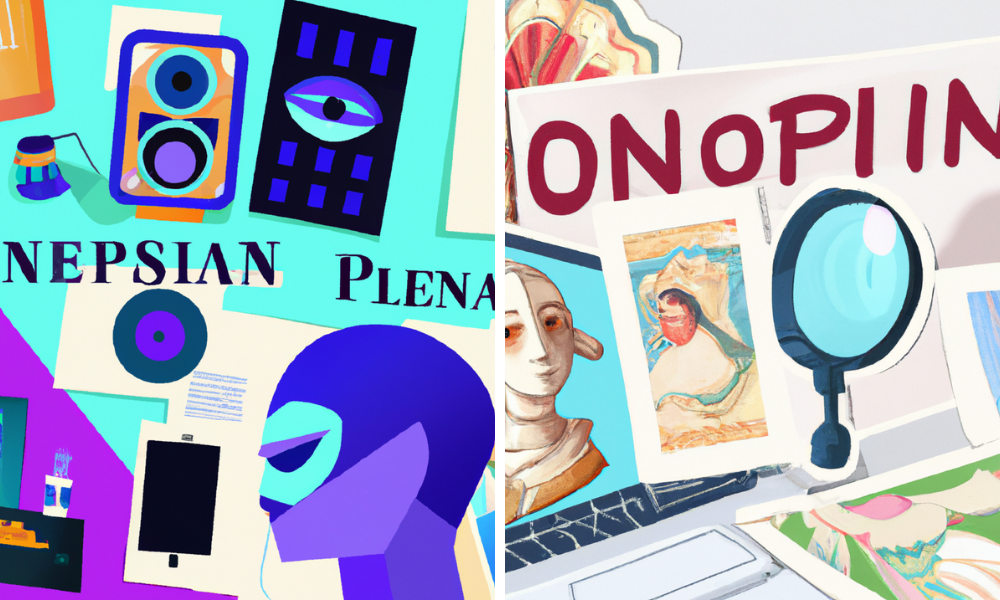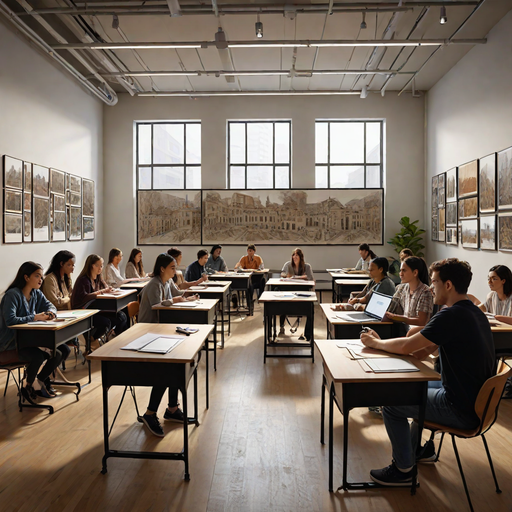Speaking a second language can be nerve-racking. You wonder if you conjugated the verb correctly, found the right noun, added the correct gender, pronounced the words right. You say the words in your head first, trying to remember which sounds to stress and the letters that make a different sound than English. Plus, how bad is your accent, really?
Speaking a second language to an AI chatbot is significantly less scary and more practical.
Helping to overcome obstacles in language learning is part of the motivation behind a project that Spanish professor Yuly Asención-Delaney is doing. This semester, she will develop speaking activities that target real-life situations using chatbots, with the goal of helping students have simple conversations in Spanish.
This project is one of 10 in NAU’s inaugural Transformation through Artificial Intelligence in Learning (TRAIL) program, which gave small grants to faculty members so they could develop innovative ways to use generative artificial intelligence (GenAI) to support student learning. The overall goal of the Office of the Provost, which sponsors TRAIL, is to ensure NAU students gain the skills and comfort they need to be competitive in the workforce.
“The only way we can be successful in preparing students for the use of AI in their professions is by empowering our faculty to explore this area and apply their expertise and innovative thinking,” said John Georgas, senior vice provost of academic operations. “This program is intended to support them in doing just that.”
When the provost’s office put out a call for proposals, the response was huge, Georgas said. Faculty are obviously interested in embracing GenAI to support student learning and research. The 10 projects selected represent a breadth of disciplines and desired outcomes.
- Yuly Asención-Delaney, Department of Global Languages and Cultures, College of Arts and Letters: Using chatbots to increase language learners’ willingness to communicate in Spanish as a second language
- Jeff Berglund, Department of English, College of Arts and Letters: The Possibilities and Perils of Using Generative Artificial Intelligence in Indigenous Literature Classrooms
- Blue Brazelton, Department of Educational Leadership, College of Education: Generative AI and Organizational Leader Development
- Marco Gerosa, School of Informatics, Computing, and Cyber Systems, College of Engineering, Informatics, and Applied Sciences: Leveraging Large Language Models to Boost Students’ Software Design and Architecture Skills
- Kiley Huntington, Department of Social Work, College of Social and Behavioral Sciences: Improving Student Learning Outcomes with a Generative AI Peer Review Partner
- Alana Kuhlman, Department of English, College of Arts and Letters: An AI Literacy Module for Students Across the Disciplines
- Nick McKay, School of Earth and Sustainability, College of the Environment, Forestry, and Natural Sciences: Integrating Generative AI in Environmental Science Education: Enhancing Fieldwork, Data Analysis, and Technical Writing
- David Politzer, School of Art, College of Arts and Letters: Tackling AI Anxiety with Art Students: Using Role-Playing, Visual Analysis and Experimentation to Ease into Artificial Intelligence
- Janice Sweeter, School of Communication, College of Social and Behavioral Sciences: AI in the Strategic Communication Classroom and Industry
- Jonna Vance, Philosophy Department, College of Arts and Letters: Dialogues with Generative AI: Exploring Human-AI Adversarial Collaborations
A peek at the projects
Asención-Delaney’s project will provide an initial assessment of the impact of AI-powered practice on students’ familiarity and comfort with conversing in another language. It also will allow her to determine how feasible the use of chatbots as conversation partners could be in terms of cost, time and availability of AI tools. It’s the first step in what could potentially be an innovative approach to language learning.
“Some AI tools provide students with options for responses, pronunciation models and feedback, and interaction with chatbots can happen at any time, anywhere—includingon students’ mobile devices,” she said. “We can practice a language with human conversational partners, but that would cost a lot of money and students wouldn’t be able to practice at a time and place convenient for them.”
Huntington, an assistant clinical professor in the Department of Social Work, is taking GenAI in a different direction—as an editor. Students will work on a research paper, and half of them will work with peer editors while the other half will use AI. The students will receive feedback from AI that they must evaluate for accuracy and implement if appropriate. He hopes students not only turn in improved papers thanks to meaningful feedback from AI but also explore how to use AI ethically in writing and get them thinking about out-of-the-box opportunities AI offers.
“This is particularly valuable for social work students, as my own experiences after graduating left me in isolated positions with limited peer support,” he said. “AI could have been invaluable to me, and I want students to have that benefit as they move forward in their careers.”
Georgas is looking forward to seeing the outcomes of the different projects, which will be shared in a showcase next semester.
“The impact these technologies are having on the professions that we’re preparing our students to enter is immeasurable,” he said. “By the time they graduate, our students will inevitably be expected to not just be familiar with AI technologies but to be able to use them in complementing their everyday work.”
Top photo: An image generated by ChatGPT using the DALL-E platform to illustrate Brazelton’s project. ChatGPT generated this prompt: Create a horizontal image of diverse organizational leaders collaborating with AI tools in a modern office setting. Show leaders analyzing AI-generated data visualizations on screens, discussing strategies, and brainstorming with AI assistants. The atmosphere is innovative and focused on leadership development with generative AI integration. I then asked it to generate the image.





